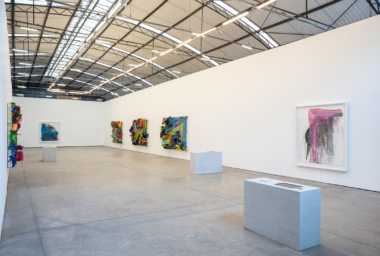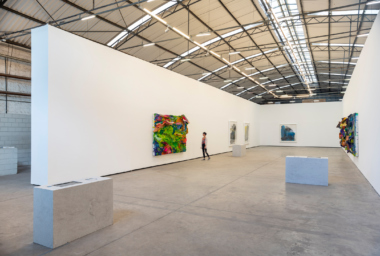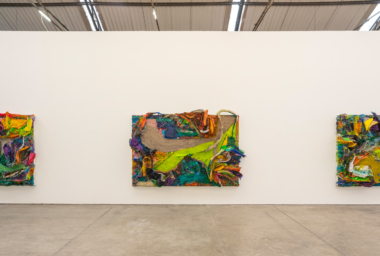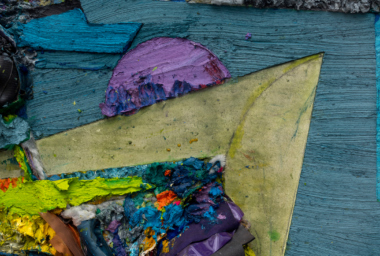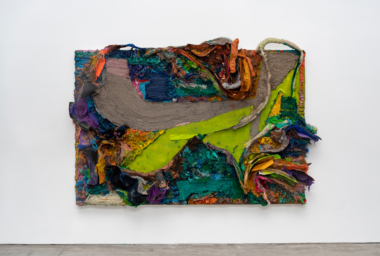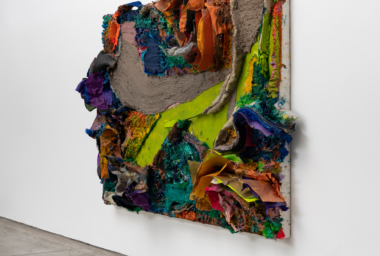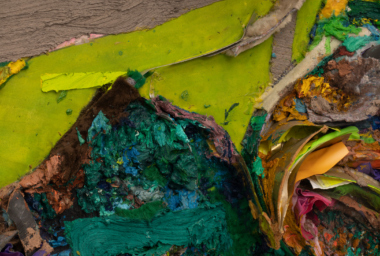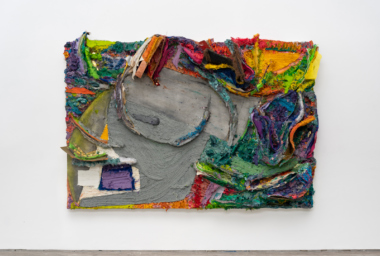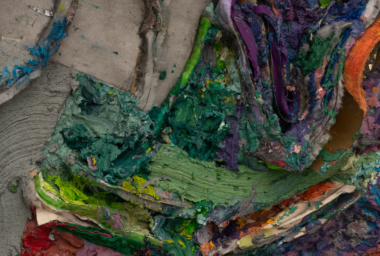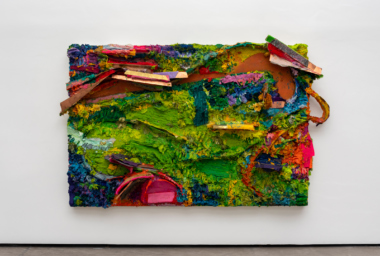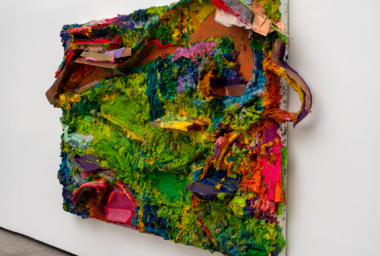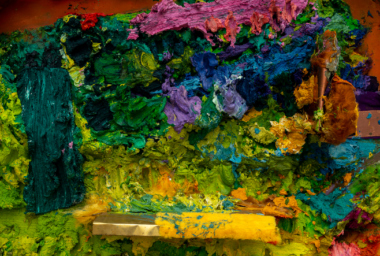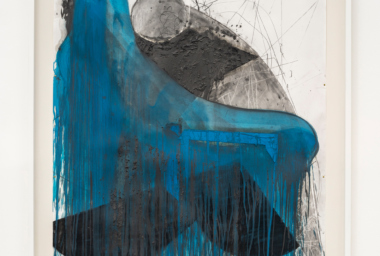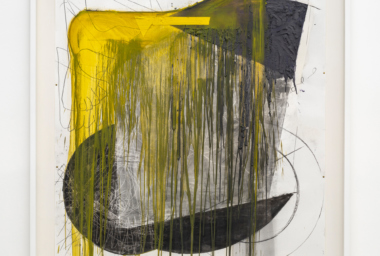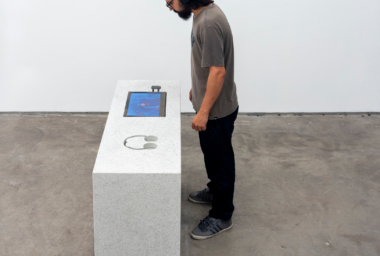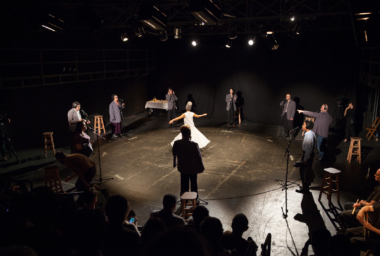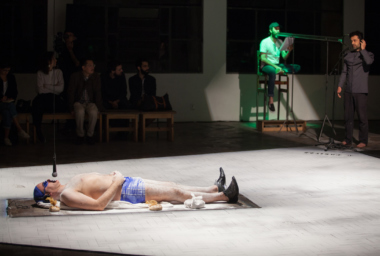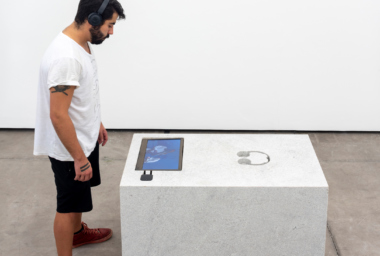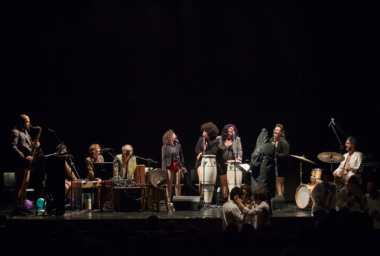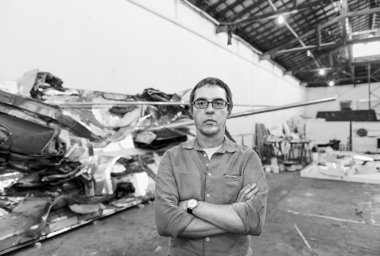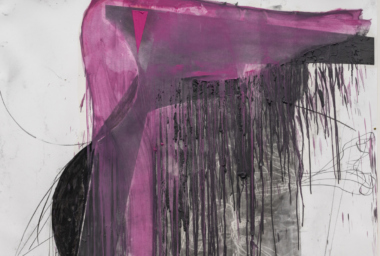
Nuno Ramos
Sol a pino
Apr 4 – May 18, 2019
Opening
Apr 4, 10 am–2 pm
Galpão
Rua James Holland 71
São Paulo
Directions
Download
Fortes D’Aloia & Gabriel is delighted to present Nuno Ramos’ Sol a pino* at Galpão. The show features painting as a central element, and retrieves its pivotal role in the artist’s work. Also on view are a series of drawings inspired by the Antigone tragedy, and videos of recent performances. Throughout the exhibit, one witnesses the artist’s latent concern for the transformations taking place in the world. Ramos either attempts to assimilate those changes, or he extrapolates and transforms them into a creative conduit.
Ramos is a multifaceted artist. He works in painting, sculpture, installation, drawing, performance and video. Furthermore, his outstanding path in the visual arts is interspersed by steady performances in the theater and literature, with prized prose and poetry books, as well as frequent collaborations as a lyricist. There are instants when all of these facets come together and become indistinguishable from one another. In the midst of this turmoil, Ramos has begun to reminisce about painting – a constant in his practice since the early 80’s when he was part of the “Casa 7” studio – and its role in his oeuvre.
The paintings in Sol a pino take stock from his ruminations on the medium and point to what he describes as an intrinsic “desire for solarization”, which is a desperate attempt to remain joyful in the gloomiest of times. Each painting weighs about 250 kilos. Ramos has developed a version of encaustic painting – a mixture of paint oil, paraffin, Vaseline and powder – to materialize electrical colors on marshy surfaces. This ancient technique calls for a short cooling time, and so requires quick action, giving each step an agitated rhythm. This is perhaps one of the reasons for his return to painting: a desire to put himself at risk, at the threshold of control over materials. Made on the ground, the paintings also receive a variety of objects such as plush, fabric, tire chambers, copper plates and aluminum. Ramos applies them to the surface building a topography, raising reliefs and opening beds, in a process he defines as the “equalization of differences.”
The solar power of the paintings has its counterpoint in the videos and works on paper, which bring more mundane themes to fore. The series of drawings evokes the figure of Antigone to deal with the clash of individual desires before the State. In the Greek tragedy narrated by Sophocles, the character fights for the right to bury her dead brother Polynices, in spite of King Creon’s orders. Ramos appropriates Antigone’s “thoughts of dust” (a verse in the play) as a device to create the drawings: he sprinkles graffiti powder on the paper in an allusion to the burial. Fragments of men and crowns recur in the drawings and take shape as he subtracts the traces of powder with masking tape or adds paint to increment the composition. As is common in Ramos’ work, written words give rise to an autonomous visual vocabulary that expands its meaning beyond the page.
Completing the show, the videos are records of the theatrical performances Aos Vivos, a trilogy designed to run parallel to the TV debates of last year’s presidential elections. The premise was to have actors on stage with headphones so they could reproduce the speeches of the candidates in real time. In the absence of a debate in the second round of the elections, the audios of the television program of the given time slot were used. In each of the plays, Ramos added an external element to interfere with the speeches. In the first debate, a dancer swirled in the center of the stage like a dervish; in the second, excerpts from Antigone were whispered through glass tubes; in the third, dialogs and the soundtrack of Terra em Transe [Glauber Rocha’s 1967 film] counterpoised the play. Ramos’ commitment to capture reality in real time is the driving force behind this project, as if representation alone could not capture the urgency of the ongoing transformations. Throughout this exhibition, his efforts gain form and weight, and the videos are displayed on screens incrusted in stones. If in the Sol a pino paintings, there is a notable desire to transform inert matter into a living thing, in Aos Vivos the volatile experience of the now is solidified in marble.
Nuno Ramos was born in 1960, in São Paulo, where he lives and works. Recent solo shows are: O Direto à Preguiça, CCBB (Belo Horizonte, 2016); O Globo da Morte de Tudo, with Eduardo Climachauska, SESC Pompeia (São Paulo, 2016) and Galeria Anita Schwartz (Rio de Janeiro, 2012); HOUYHNHNMS, Estação Pinacoteca (São Paulo, 2015); Ensaio Sobre a Dádiva, Fundação Iberê Camargo (Porto Alegre, 2014); Anjo e Boneco, Museu Oscar Niemeyer (Curitiba, 2013); 3 lamas (ai, pareciam eternas!), Galeria Celma Albuquerque (Belo Horizonte, 2012); and Fruto Estranho, MAM Rio (Rio de Janeiro, 2010). Noteworthy groups shows include the São Paulo Biennial (2010, 1994, 1989 and 1985), and the Venice Biennial (1995). His work is present in the following collections: Tate Modern (London), Walker Art Center (Minneapolis), Inhotim (Brumadinho), MAC-USP (São Paulo), MAM-SP (São Paulo), among others.
On April 16, Nuno Ramos will launch his latest book, Verifique se o mesmo, at Tapera Taperá (Av. São Luís 187, Loja 29, São Paulo). Published by Editora Todavia, the book brings together a collection of essays on Brazilian culture.
* “Sol a pino” refers to the moment the sun achieves its highest point in the sky. The phenomenon happens twice a year in the tropics, but the figure of speech is widely used to allude to the blazing hot midday sun.
